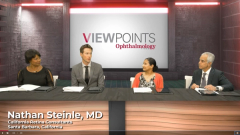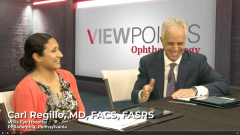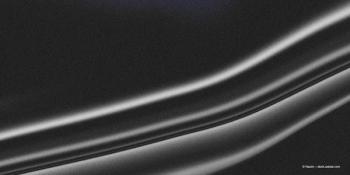
The YOSEMITE and RHINE Trials in DME
Expert retina specialists provide an overview of the YOSEMITE and RHINE clinical studies of faricimab in the treatment of DME.
Episodes in this series

Nathan Steinle, MD: In the study, the PTI [personalized treatment interval] arm, and it’s basically a treat and extend; we all say we do treat and extend, but when we have to define it for a clinical study, it’s hard to do. What are your thoughts on how they defined it in the study? Talk us through how they decided whether to go up or down in the intervals.
Carl Regillo, MD, FACS, FASRS: It was based both on vision and OCT [optical coherence tomography], which is comparable to the way we do it in practice. We take all this into consideration. I think we emphasize and talk about, is the macula dry, so we’re looking at the anatomic response. But that’s because the only way to get vision improvement or to get the best vision outcomes is to dry the macula the best we can. We do take all that into consideration, but it is probably mainly driven by the OCT.
Many other studies have shown that. In fact, up to the clinical trials with faricimab, the DRCR [Diabetic Retinopathy Clinical Research] Network definitively showed that aflibercept was the better drying drug in the setting of DME [diabetic macular edema], and that did translate into better vision gains. So in DME this is important. That doesn’t mean you necessarily have to get the macula bone dry. We often talk about fluid tolerance, a bit of DME is often very well tolerated, so that’s why taking into consideration vision is very important. But nonetheless, we’re still striving for a dry or nearly dry macula if we can, and to get them there fastest with the least amount of treatment, that means we’re going to want to favor the drug that can do that.
Prethy Rao, MD, MPH: Dr Regillo, would you say you tolerate intraretinal fluid more in your patients with DME than your patients with AMD [age-related macular degeneration]?
Carl Regillo, MD, FACS, FASRS: The answer is technically yes because it’s pretty common to have a little residual cyst that is probably fluid in this condition as opposed to degenerative cysts that you might see with atrophy or fibrosis because you’re not really dealing with atrophy in this disease. It is a retinal vascular disease as opposed to a chorioretinal or choroidal-based process as with AMD. You said it earlier, these are very different diseases. On the surface they sound the same, treated with the same drugs, loading doses, regimens that are very similar, similar study results, but they are very different diseases. There are other factors, especially the systemic factors, which weigh in here quite a bit.
Adrienne Scott, MD: That’s why I thought the DRCR protocol V was very important, looking at patients with better vision and thickened central foveas. I think patients with DME can tolerate a bit of fluid without necessarily compromising vision. I think that study was really important. As Dr Regillo and Dr Rao are mentioning, you can tolerate a bit of intraretinal fluid at your central subfield and still have very good vision, surprisingly so. So again, you don’t have to have the macula bone dry to have good vision outcomes in DME.
Transcript edited for clarity
Newsletter
Keep your retina practice on the forefront—subscribe for expert analysis and emerging trends in retinal disease management.















































